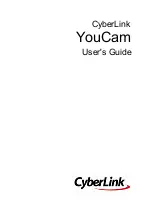
229
Copyright © Acronis, Inc., 2000-2010
Disk #:
Disk # (MODEL)
(p. 231)
Select the destination disk for each of the source disks.
NT signature
(p. 229)
Select the way the recovered disk's signature will be handled. The disk signature is used by
Windows and the Linux kernel version 2.6 and later.
Disk destination
To specify a destination disk:
1.
Select a disk where you want the selected disk to recover to. The destination disk's space should
be at least the same size as the uncompressed image data.
2.
Click
OK
.
All the data stored on the target disk will be replaced by the backed up data, so be careful and watch out for
non-backed-up data that you might need.
NT signature
When the MBR is selected along with the disk backup, you need to retain operating system
bootability on the target disk volume. The operating system must have the system volume
information (e.g. volume letter) matched with the disk NT signature, which is kept in the MBR disk
record. But two disks with the same NT signature cannot work properly under one operating system.
If there are two disks having the same NT signature and comprising of a system volume on a machine, at the
startup the operating system runs from the first disk, discovers the same signature on the second one,
automatically generates a new unique NT signature and assigns it to the second disk. As a result, all the
volumes on the second disk will lose their letters, all paths will be invalid on the disk, and programs won't find
their files. The operating system on that disk will be unbootable.
To retain system bootability on the target disk volume, choose one of the following:
Select automatically
A new NT signature will be created only if the existing one differs from the one in the backup.
Otherwise, the existing NT signature will be kept.
Create new
The program will generate a new NT signature for the target hard disk drive.
Recover from backup
The program will replace the NT signature of the target hard disk with one from the disk backup.
Recovering the disk signature may be desirable due to the following reasons:
Acronis Backup & Recovery 10 creates scheduled tasks using the signature of the source hard
disk. If you recover the same disk signature, you don't need to re-create or edit the tasks
created previously
Some installed applications use disk signature for licensing and other purposes
This enables to keep all the Windows Restore Points on the recovered disk
To recover VSS snapshots used by Windows Vista's "Previous Versions" feature
Keep existing
The program will leave the existing NT signature of the target hard disk as is.
















































